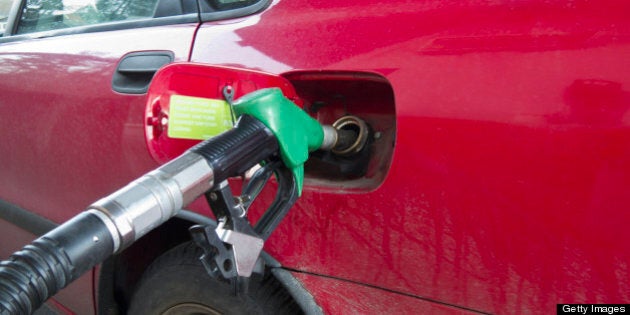
With spring upon us, there will be no doubt plans for the summer vacation and for many, the always enjoyable road trip. But we are not driving like we once used to. At a time, jumping in the car and heading to destinations unknown was a hallmark of North American travel, however, in the last decade, the number of miles driven has dropped significantly. One of the causes of this decline is the new reality of increasing gas prices; a trend that appears to have no end. This has sparked a revolution by both the American and Canadian governments to spur biofuels technology and attain a cleaner, safer - and hopefully less expensive gas supply.
For many microbiologists, this has turned into a windfall as they turn to germs to keep the momentum going.
The use of germs to produce biofuels has been in exploration since the mid-1990s but only in the last seven years has the concept - and the technology - taken off. The concept is quite simple: identify microbes that have the potential to create the precursors of gasoline and other fuels, grow them up in large quantities in large fermenters, and then collect the byproducts for future use. It's a technology that has been in place for other important products such as insulin and penicillin.
But while the process is fairly straightforward, finding the right organisms to perform the job is a more difficult task. The diversity of bacteria, fungi and algae is so great that the identification of one particular species or strain has been a challenge for many researchers. Over the years, widespread searches of the globe, from the oceans to grasslands to the depths of Antarctica have uncovered several microbes with the potential to develop biofuels. But a greater treasure trove of germs ready to take on the role of gas price droppers lies much closer to home and in a place most of us have either seen or smelled.
The cow rumen is known to house a vast array of environmental bacteria and fungi and many are very good producers of methane and at one time were considered to be a contributor to climate change. A number of scientists have since examined the microbial makeup of the bovine gastrointestinal tract and found that in addition to these methane producers, there were a host of germs that could produce the precursors for biofuels as well as hydrogen, a future fuel for cars.
Blog continues after slideshow
But cows are not alone in their ability to produce microbial biofuel engineers. Earlier this week, a group out of the University of California, Santa Barbara found that horses may be able to help human move without the need for a saddle.
The team, led by Dr. Michelle O'Malley found that the horse rumen is also a great place to look for fuel production. Moreover, she may have found a key to an even better, faster and cheaper process. While their research has only been shared at a scientific meeting the results have been quite dramatic. The main focus was a fungus that has the ability to degrade cellulose and produce simple sugars for the horse and also biofuel precursors, including hydrogen, as byproducts.
What makes this work so fascinating in comparison to other biofuels work is that the fungus best produces these byproducts in an environment that is void of oxygen. As most germs prefer to have an oxygen-rich environment, this trait of the fungus can enable a more pure culture development and an easier fermentation process without the worry of contamination. This could make the cost of production even cheaper. Also, considering the flammability of oxygen, any work in its absence would be considered safer.
The field of microbial biofuel production is a new one but its growth continues at a relatively fast pace. In the next decade, a new breed of microbial factories will undoubtedly surface in which the workers will not be humans or robots, but microscopic entities eating away at nutrients and pumping out useful molecules for fuel. But to all of us, the real hope of this work will be a streamlined process for the production of the commodities we so dearly need, and hopefully, lower gas prices.
